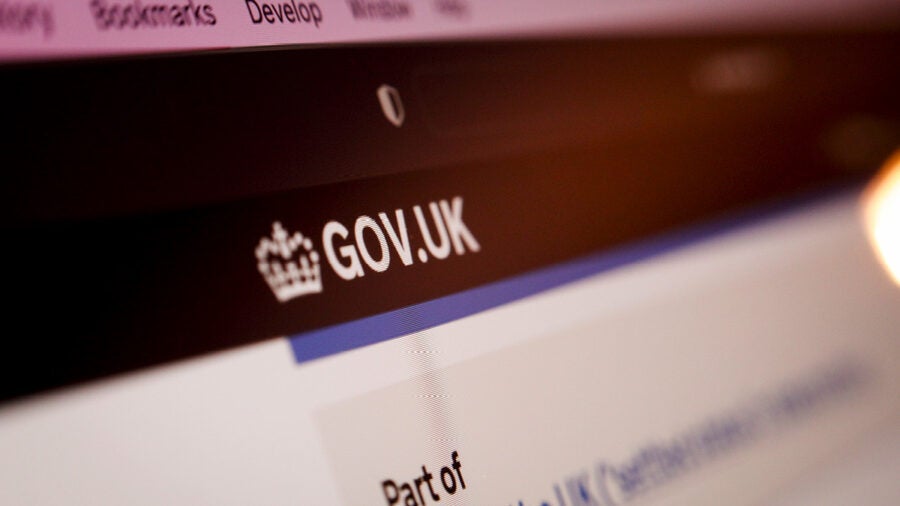
Data really does make the world go around. With the ‘app-ification’ of everything, consumers now expect this world at their fingertips – a simple swipe here or a tap there and they’ve got almost everything they could ask for. Understandably, people want to use similarly sophisticated systems to access public services. Shouldn’t a hospital have access to medical notes from a GP, by default? But those joined-up, data-powered, personalised experiences have been elusive. So far.
The UK was early off the blocks in the race to digitise government. Many of its services, like the Gov.uk website, won awards. Now, though, the public is more concerned with the government’s ability to manage data responsibly. Just take a look at Deloitte’s The State of the State 2022-23 report, which found that when engaging with public services online, 73% of respondents said data security is “essential” or “very important”. But according to the Thales 2022 Consumer Digital Trust Index, Brits just don’t trust the government with their data. Only 19% of respondents believe the government will keep their personal data secure, which is among the lowest level of trust for any nation.
That’s not to say that the public sector is barren of examples where data is driving utility and innovation. Caroline Carruthers, the former chief data officer for Network Rail, points to the fact that Fire and Rescue Services have started using digital twins for training purposes. The interiors of buildings are mapped out in virtual worlds so, rather than setting a room on fire, recruits can simply don a headset. The Police Digital Service, meanwhile, coordinates cloud deployments and knowledge-sharing among the UK’s many forces. And NHS Digital, which recently merged with NHS England, has rolled out plenty of tech-powered programmes, from the Adoption Registration Service to the urgent care self-service tool used in A&Es.
People are frightened to take that first step because they’re wandering into the unknown
So there’s a plethora of digital services that do exist. Delivered well, these can “cut through the politics and inform superior public services,” says Kevin Curran, professor of cybersecurity at Ulster University. Consider the Covax project by Ireland’s Health Service Executive (HSE). While the organisation had long planned to digitise, the emergency of the Covid crisis forced the HSE into taking action. It built web portals for public engagement, managed vaccine appointments by the cloud, reported using business analytics and created an API-led approach to connectivity that joined up all the systems that sprang to life. It’s a far cry from spreadsheets and PowerPoint slides.
Yet there remain roadblocks to making good on the public sector data promise, not least that low level of trust, combined with often disconnected and siloed data and a complex tangle of regulations. Perhaps even more pressing is what Carruthers calls a “paralysis of perfection”, when the fear of a failure to achieve immediate excellence hampers that first leap towards innovative thinking.
“People are frightened to take that first step because they’re wandering into the unknown or they believe they’re going to end up on the front page of the Daily Mail,” Carruthers says. “The idea of failing is this sword of Damocles hanging over their head. But unless they can experiment and innovate, how do they move forward?”
One possible solution lies in starting small, to solve common low-stakes problems where “nobody is going to die” if it goes wrong, she adds. By running small-scale simple pilots, organisations can test their methodology around how they solve challenges and deploy the technology, rather than getting bogged down in the problem itself and if it careens off course.
Incremental steps like these can help organisations see where they’re getting service delivery right and where there’s room for improvement. At the same time, it removes – or at least lessens – the pressure of that perfection paralysis.
Another glaring issue is the complexity of the public sector itself. While service users may view organisations such as the NHS as a monolith, it in fact consists of 219 trusts. The labyrinthine structures that have evolved over the years across the public sector mean that is often siloed and subject to its own specific legislation, depending on the function of the public body – whether that’s policing or cross-country data-sharing. There’s no getting around this, and it should be thought of as an opportunity to ensure that data is protected.
“There can be privacy issues in releasing public data sets,” Curran says. “Care needs to be taken to prevent any personally identifiable information from being released inadvertently. There is also a need to clarify terms of how the government can access and release any large-scale population data.”
While there has been progress in connecting this data, this must continue. Verifying the quality of data is a tough nut to crack until the issue of silos is tackled.
John Bruce is co-founder and CEO of Solid (Social Linked Data), Sir Tim Berners-Lee’s web decentralisation project. Bruce explains that data tends to collect in silos from one government agency to the next and the result of that is that these silos grow independently and operate out of sight of the citizen. That can translate to little in the way of transparency around how that citizen’s data is used. To help solve this, Solid recently spearheaded a digital identity project in Belgium. Millions of citizens in Flanders access public services using a digital identity that is contained in a personal data store called a Solid Pod.
“The question of whether citizens trust their government to use data responsibly can vary massively. But technology can open two-way communication between citizens and governments, which garners trust,” Bruce says. “Citizens want to have some visibility into what the government knows about them – and the ability to augment that information when it’s relevant. Digital services work best when citizens feel that their individual needs and circumstances are properly understood.”

Data really does make the world go around. With the ‘app-ification’ of everything, consumers now expect this world at their fingertips – a simple swipe here or a tap there and they’ve got almost everything they could ask for. Understandably, people want to use similarly sophisticated systems to access public services. Shouldn’t a hospital have access to medical notes from a GP, by default? But those joined-up, data-powered, personalised experiences have been elusive. So far.
The UK was early off the blocks in the race to digitise government. Many of its services, like the Gov.uk website, won awards. Now, though, the public is more concerned with the government’s ability to manage data responsibly. Just take a look at Deloitte’s The State of the State 2022-23 report, which found that when engaging with public services online, 73% of respondents said data security is “essential” or “very important”. But according to the Thales 2022 Consumer Digital Trust Index, Brits just don’t trust the government with their data. Only 19% of respondents believe the government will keep their personal data secure, which is among the lowest level of trust for any nation.
That’s not to say that the public sector is barren of examples where data is driving utility and innovation. Caroline Carruthers, the former chief data officer for Network Rail, points to the fact that Fire and Rescue Services have started using digital twins for training purposes. The interiors of buildings are mapped out in virtual worlds so, rather than setting a room on fire, recruits can simply don a headset. The Police Digital Service, meanwhile, coordinates cloud deployments and knowledge-sharing among the UK’s many forces. And NHS Digital, which recently merged with NHS England, has rolled out plenty of tech-powered programmes, from the Adoption Registration Service to the urgent care self-service tool used in A&Es.

